Page Contents
Wondering what’s compliance gaining in marketing? Remember those times when you received emails from retail stores that tried to convince you to buy? They created a sense of urgency by saying things like, “Hurry! Only two days left for our summer offer” or “Act now and save 20% on any of our products!” Well, that’s a simple example of compliance gaining in marketing.
Using compliance gaining techniques is an excellent way to increase conversions. And in this blog post, we are going to discuss some of these techniques with examples. So read on to find out how to gain compliance from your customers and boost conversions.
What Is Compliance Gaining?
Compliance gaining refers to the process of attempting to change someone’s behavior and making them do what you want them to do. Compliance occurs when you do something at someone’s request while you could have refused.
Though originally a term used in social sciences, compliance gaining is applied to marketing campaigns by marketers. They use compliance gaining strategies to encourage potential customers to take action.
Compliance Gaining Vs. Persuasion
You might be thinking: “aren’t compliance gaining and persuasion the same thing?” While they might seem similar, they are somewhat different. Compliance gaining is about changing people’s behavior, whereas persuasion is about changing attitudes.
For example, you can persuade a potential customer that your product is right for them. But that doesn’t necessarily mean they would buy it. On the other hand, you can make them purchase the product using compliance gaining techniques.
Compliance Gaining Techniques
Compliance gaining involves having a deep understanding of customer behavior. This knowledge is necessary as it helps marketers understand how they can influence buyers’ behavior to persuade them to purchase.
Today, customers are exposed to up to 5,000 ads each day. So, how can you win customers’ attention with all those ads out there? That’s why you must use consumer psychology properly to stand out from the competition.
Now, let’s take a look at some of the strategies you can apply to gain customers’ compliance and get ahead of competitors:
1- Door in the Face
In the door-in-the-face (DITF) technique, marketers first make a large request that the customer will most probably reject. If so, marketers will make a more reasonable request, which is what they want customers to comply with. What makes people say “Yes” the second time is that they might feel guilty to say “No” again.
An example of this technique is when you bargain with a shopkeeper. You agree on a price lesser than what the seller has first asked but higher than your initial offer.
Here’s an example of door-in-the-face in online marketing. Bluehost mentions a regular price that is higher than the actual price. This way, it makes the actual price seem more reasonable.
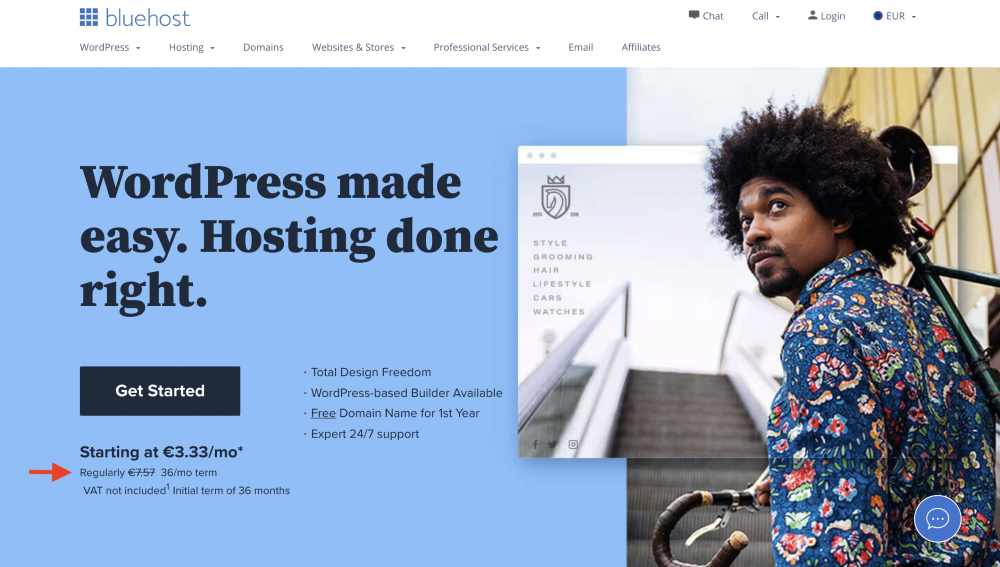

2- Foot in the Door
Unlike DITF, in the foot-in-the-door (FITD) technique, marketers start by asking a smaller request that is most likely accepted. Later, they will ask for something larger, which is the actual action they want customers to take. Poepls’ tendency to stay consistent with their previous actions and words makes this compliance gaining technique effective.
Free trials are an example of using the FITD technique. Once you get a customer to use your products or services, it’s easier to make them commit to a sale.
Below you can see a foot-in-the-door example from HubSpot. On the blog, it asks visitors to subscribe to receive updates via email. Then, HubSpot can ask them for bigger requests through their emails.
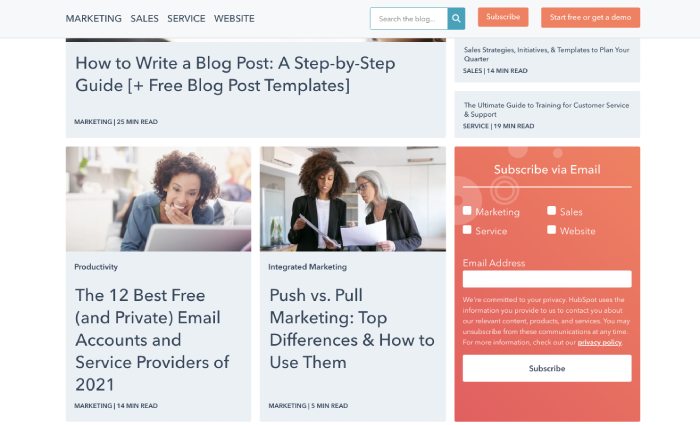

3- That’s Not All
In this compliance gaining technique, the marketer first presents an initial request. Then, they immediately make the request more attractive by adding additional offers before getting a response.
Here are some examples of the that’s-not-all (TNA) technique:
- Offering a discount on the second step
- Adding extra value by offering an extra product
- Starting with a high price and decreasing it
4- Disrupt, then Reframe
Disrupt-then-reframe (DTR) is a technique where you first make your request in a way that confuses or distracts the user. Then you immediately reframe the request to convince them to accept the suggestion.
Usually, DTR is done by playing with words to disrupt the customer’s thought process. When the customer’s brain is busy processing the disruption, they will be less resistant to the reframed request.
Look at this advertisement from Snickers. The incorrect spelling disrupts the reader’s thought process. Then, the reframe comes to resolve the confusion، which makes the request seem reasonable.
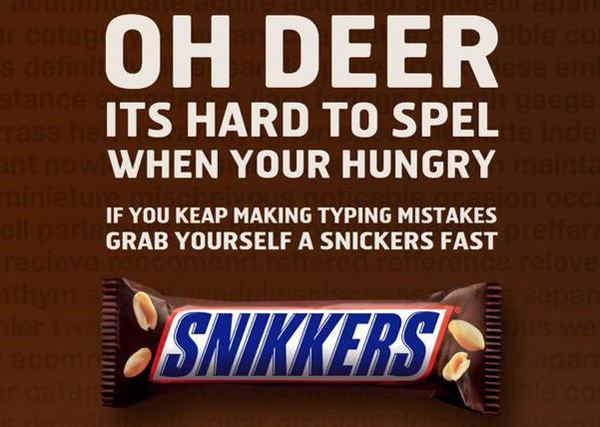

Image source: wheatleys.co
5- Ingratiation
Ingratiation makes others comply with your request by creating a sense of familiarity. By being relatable and likable, people will be more likely to accept your offer. That means focusing on similarities enables you to make customers like you, so they will be more willing to buy from you.
Personalizing customers’ experiences on your website can be an example of the ingratiation technique. Creating a unique experience for each customer based on their interest is an excellent strategy to improve the conversion rate.
Airbnb is an example of a website that does a great job with personalization. It recommends to visitors travel destinations based on their geolocations. They can see how long it takes to reach each destination. Airbnb also enables users to save their searches, so they don’t have to search for a destination all over again.
These features make this website more helpful and likable to visitors, encouraging them to spend more time on it.
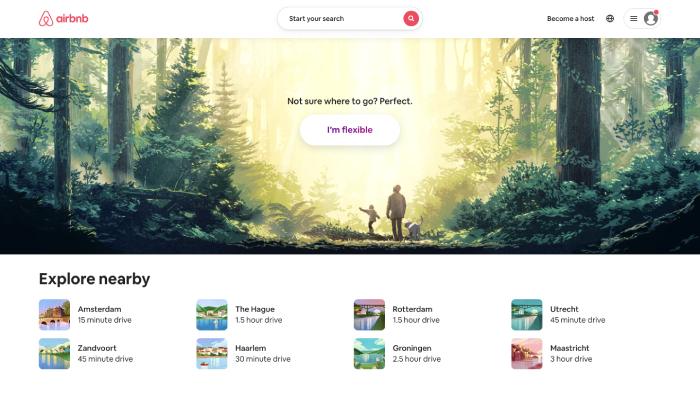

6- Lowball
The lowball compliance gaining strategy involves making the customer comply with an initial request. Afterward, marketers suddenly increase the price. The customer won’t probably disagree since they have already committed.
An example of this strategy is when you make a customer interested in an offer then add some fees. Imagine you have agreed to buy a service for $60 per month. But then the seller adds some charges, making you accept they are necessary.
7- Dump and Chase
Sometimes marketers use this technique whenever a customer rejects their request. They respond to the objection by asking “Why not?” followed by a message to overcome the second objection.
Using the dump-and-chase (DAC) technique creates a sense of urgency and guilt. When you repeat your request, the sense of urgency makes it seem more important. Also, this technique makes the customer feel obligated, so they might experience guilt if they don’t want to comply.
Here’s an example of how you can use this strategy to get more conversions. If a customer doesn’t buy your products or services, you can repeat your request via email if they are on your mailing list. By sending emails and addressing their issues, you can finally get them to buy from you.
You can use a behavior analytics tool, such as Watch Them Live, that enables you to track specific users on your website using their email addresses. With this tool, you can send them customized messages based on their interactions with your website to encourage conversion.
WTL also offers services like heatmaps and session replays that help you track your website visitors. Using these features, you can find out how effective your compliance gaining strategies are on your website. You can see how people interact with each element and your CTAs. By understating their behavior, you can figure out how to improve your website for more conversions.
Want to try out Watch Them Live? Choose the plan that suits you best and get your free trial.


8- Pique
The pique technique is an excellent way to capture the buyers’ attention and cut through the noise. This compliance gaining technique involves making an unusual request that piques the buyers’ interest. After you’ve got their attention, it’s time to present your original request.
This technique works great for collecting donations. You can increase the donation rate by asking for unusual amounts that don’t end in 0s or 5s.
Online donation forms usually include amounts like $25, $50, $100, and so on. But, for example, asking for $21, $49, and $93 are more attention-grabbing and seem more well-thought-out.
Take a look at the Sightsavers donation page and see how it uses this technique to boost conversions. It even adds a statement below each amount to make the request more effective and attract more attention.
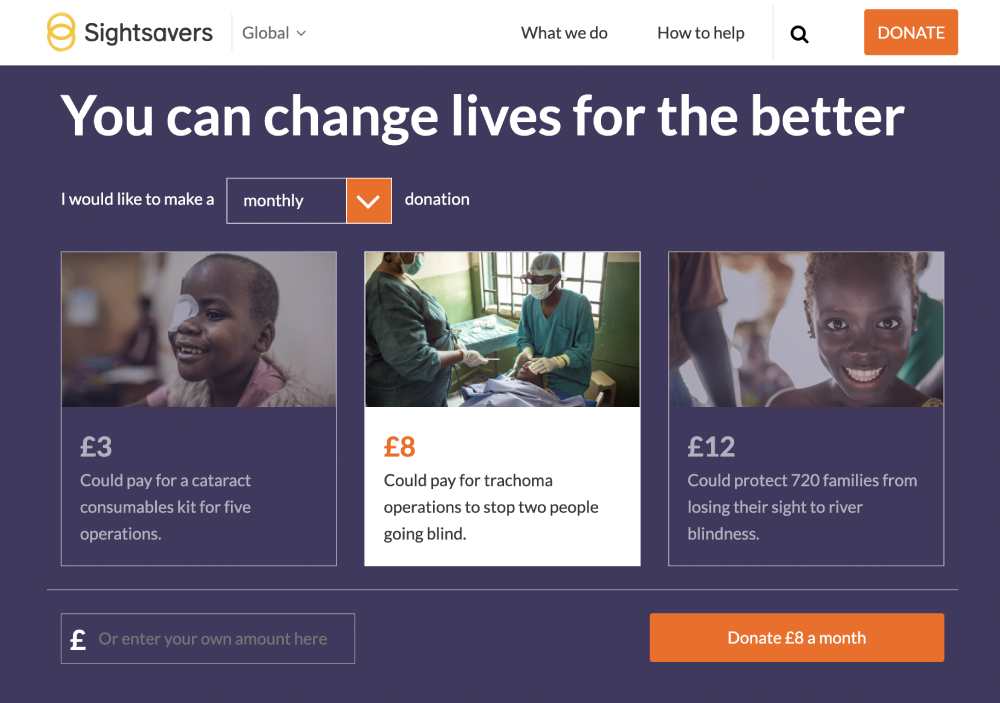

9- Reciprocity
In the reciprocity technique, you can make people comply with your request by doing them a favor. That’s because they feel like they have to return the favor. Reciprocity creates a burden of expectations which people don’t like.
HubSpot Academy is an excellent example that uses reciprocity by offering free knowledge. This strategy helps them build trust and brand authority which results in higher conversion rates.
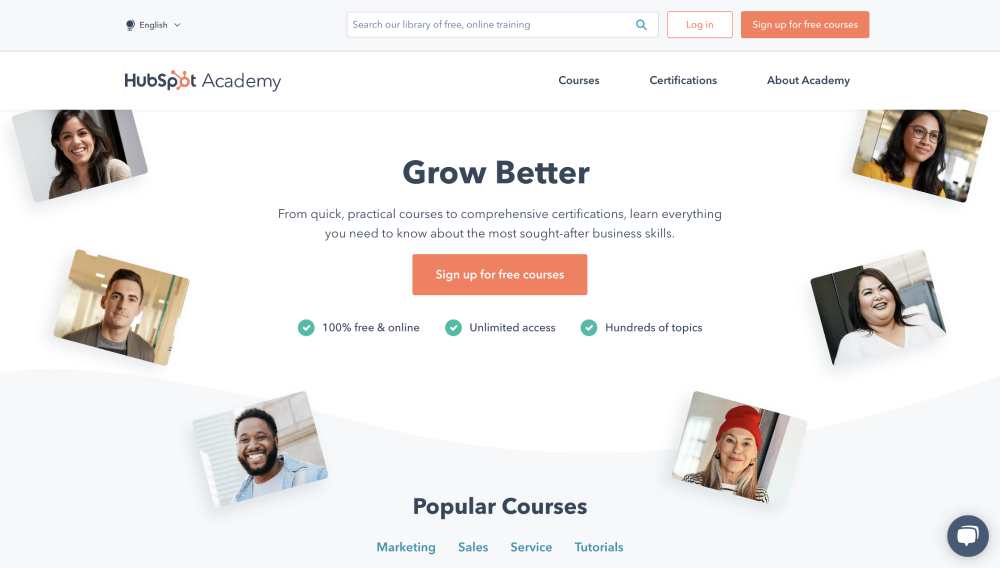

10- But You Are Free
But-you-are-free-to-refuse (BYAF) is a technique where you ask for something from the customer; then, you remind them they are free to refuse. You need to acknowledge that they have a free choice, even though it’s obvious. This strategy is effective because customers don’t feel like their freedom is threatened, making them less motivated to refuse.
11- Authority
It’s much easier to gain people’s compliance when you are in a position of authority. The reason is that people consider the judgment of an authority figure more reliable than their own.
Brands can use the authority technique in many ways for conversion optimization:
- Celebrity endorsements
- Adding logos of reputable brands to their website
- Including pictures of people in authority positions, like scientists dressed in lab coats
- Using social proof
Neil Patel is a perfect example of using this compliance gaining strategy. On the homepage, you can see how he associates his name with other authorities to increase credibility.
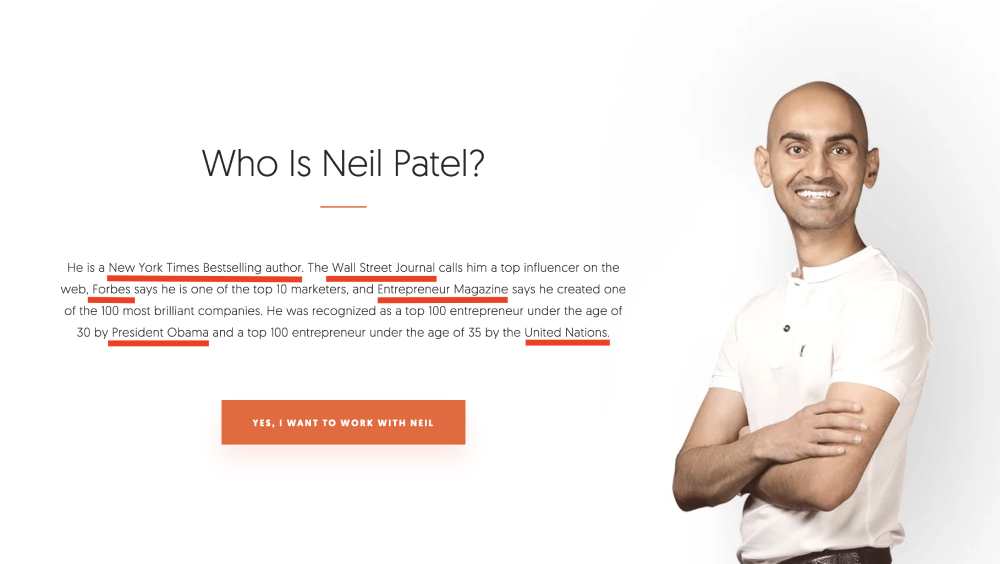

Conclusion
Using compliance gaining techniques can be a great idea to improve your conversion rate and generate more revenue. In this article, we introduced 11 of these techniques. Try to find out which ones work better with your target audience to get the best results.

